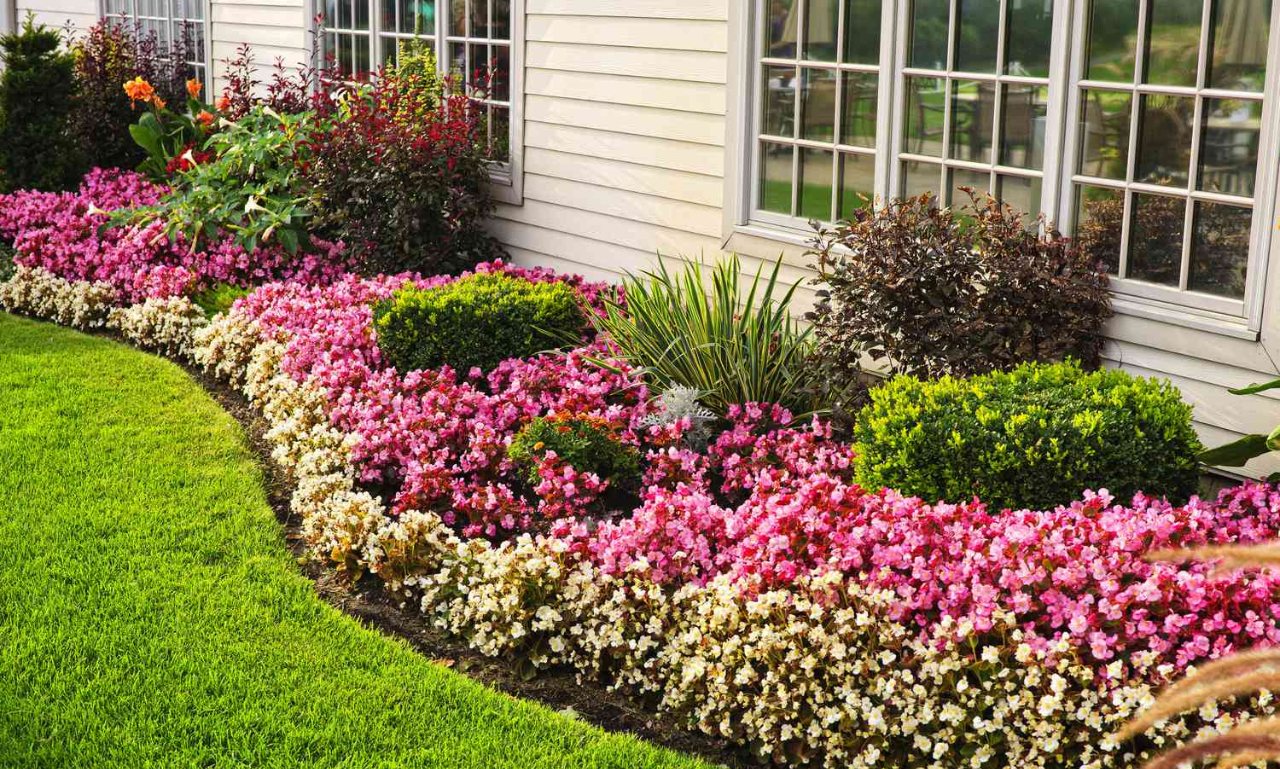When it comes to creating a well-defined and beautiful garden, garden edging is often an overlooked yet highly effective solution. Whether you’re new to gardening or a seasoned green thumb, understanding the importance of edging can transform the aesthetics and practicality of your outdoor space. Not only does it create crisp lines between your lawn, flower beds, and pathways, but it also helps prevent invasive plants from creeping into areas where they don’t belong. This blog will cover everything you need to know about garden edging, including types, materials, installation tips, and the benefits it offers.
What Is Garden Edging?

Simply put, garden edging is the process of creating clear borders between different areas of your garden, such as flower beds, lawns, or vegetable patches. Edging defines spaces, giving your garden a more organized and polished look. It serves both functional and aesthetic purposes, from keeping mulch or soil in place to adding visual interest with a decorative touch.
Why Garden Edging Is Important
Garden edging offers several key benefits that make it an essential feature of any well-maintained garden. Here are some reasons why you should consider adding edging to your outdoor space:
- Clean and Defined Lines: One of the main benefits of garden edging is that it creates a clean separation between different areas, like your lawn and flower beds. This helps your garden look organized and well-cared-for.
- Weed Control: By creating a physical barrier, garden edging can prevent grass and weeds from creeping into your flower beds, reducing the need for constant weeding.
- Mulch and Soil Retention: Edging helps to keep mulch, soil, and other materials within the designated areas, ensuring that they don’t spill onto your lawn or pathways.
- Prevents Lawn Damage: Without proper edging, mowing the lawn can damage flower beds and other parts of your garden. Edging provides a buffer that protects these areas.
- Aesthetic Appeal: Garden edging comes in a variety of styles and materials, so you can choose a design that complements your garden’s overall look. It adds a finished, professional touch to your landscaping.
Types of Garden Edging Materials
There are several different types of materials that you can use for garden edging, each offering its own unique look and level of functionality. Here’s a breakdown of the most popular materials:
1. Stone Edging
Stone edging is durable and adds a natural, rustic look to your garden. Whether you use flat stones, rounded pebbles, or decorative rocks, stone edging blends well with most garden designs. The natural weight of the stones also helps to keep them securely in place.
Pros:
- Long-lasting and weather-resistant
- Adds a natural, elegant feel
- Can handle harsh weather conditions
Cons:
- Can be expensive
- Requires heavy lifting and precise placement
2. Brick Edging
Brick is another timeless choice that offers durability and a classic look. This type of garden edging works especially well for formal garden designs. Bricks can be laid flat, standing up, or even arranged in patterns to create a unique border.
Pros:
- Strong and durable
- Can be customized with different patterns
- Adds a formal, classic touch
Cons:
- Installation can be labor-intensive
- Bricks can shift over time without proper foundation
3. Metal Edging
For a sleek and modern look, metal edging is a great option. It’s typically made from materials like steel or aluminum, and it provides sharp, clean lines. Metal edging is excellent for minimalist garden designs or contemporary landscapes.
Pros:
- Thin and unobtrusive
- Highly durable
- Ideal for modern garden designs
Cons:
- Can rust over time (unless rust-resistant materials are used)
- May need professional installation for best results
4. Wood Edging
Wood is a versatile and affordable choice for garden edging. It can range from simple wooden planks to decorative logs or timber. While wood offers a warm and rustic aesthetic, it’s also susceptible to rot and damage over time, especially if it’s exposed to moisture.
Pros:
- Affordable and easy to install
- Natural appearance that complements garden settings
- Can be customized by staining or painting
Cons:
- Prone to rot and insect damage
- Requires regular maintenance, like sealing or treating
5. Plastic Edging
Plastic edging is one of the most budget-friendly options available. It’s lightweight, easy to install, and comes in a variety of colors and styles. Though it’s not as durable as other materials, plastic edging is ideal for temporary or low-maintenance gardens.
Pros:
- Cost-effective
- Easy to install and replace
- Available in many designs and colors
Cons:
- Less durable than other options
- May warp or crack over time
How to Install Garden Edging
Installing garden edging may seem like a daunting task, but with the right preparation, it’s a straightforward process. Follow these steps to add garden edging to your outdoor space:
1. Plan Your Design
Before you start digging, decide where you want the edging to go. Mark out the areas using a garden hose, string, or spray paint to visualize the layout. Consider the shape of your flower beds, lawn, and any pathways.
2. Prepare the Area
Clear the area where you’ll be placing the edging. Remove grass, weeds, and debris from the borders to ensure a smooth surface. Use a spade or edging tool to create a trench where the edging material will sit.
3. Install the Edging
Place your chosen material into the trench. For heavier materials like stone or brick, you may need to use a mallet to gently tap them into place. If you’re using metal or plastic edging, secure it with stakes or anchors to prevent shifting.
4. Level and Align
Make sure that the edging is level and aligned correctly. This will give your garden a neat, professional appearance. Adjust as needed before filling in any gaps with soil or mulch.
5. Finish the Edges
Once the edging is in place, fill in any gaps with soil or mulch to secure it. Water the area lightly to help settle the soil and maintain stability.
Creative Garden Edging Ideas
If you’re looking to add a unique touch to your garden, here are some creative ideas for garden edging that go beyond the basics:
1. Recycled Materials
Consider using recycled materials like old bottles, tiles, or even broken plates to create an eclectic, environmentally-friendly garden edge. These materials add character and are a great way to reduce waste.
2. Natural Logs
For a rustic, woodland vibe, use logs or driftwood to create a natural border. This type of edging works especially well in gardens with a lot of greenery and native plants.
3. Mini-Hedges
Instead of traditional edging materials, plant small, low-growing hedges like boxwood or lavender along the borders of your garden. This adds both structure and greenery.
4. Gabion Walls
Gabion walls, which are wire cages filled with stones, are becoming increasingly popular for both garden edging and larger landscaping projects. They offer a contemporary, industrial look that’s perfect for modern gardens.
Maintenance Tips for Garden Edging
Once you’ve installed your garden edging, proper maintenance will help ensure it stays in good condition. Here are some tips:
- Regularly Inspect for Shifts: Check the edging periodically to ensure it’s still in place. Heavy rain or freeze-thaw cycles can cause materials to shift.
- Clean Debris: Remove any grass, weeds, or dirt that accumulates around the edging. This will help maintain the clean, defined look of your garden.
- Treat Wood Edging: If you’ve used wood, apply a weatherproof sealant every few years to protect it from rot and insect damage.
- Repair as Needed: If you notice any cracks, warping, or other damage, address the issue as soon as possible to prevent further deterioration.
Conclusion
Garden edging is more than just a functional element of landscaping—it’s a design feature that can enhance the beauty and structure of your outdoor space. Whether you opt for stone, wood, metal, or something more creative, the right garden edging can transform your garden from ordinary to extraordinary. With the proper materials, installation, and maintenance, your garden will not only look stunning but also be easier to manage. Happy gardening!



